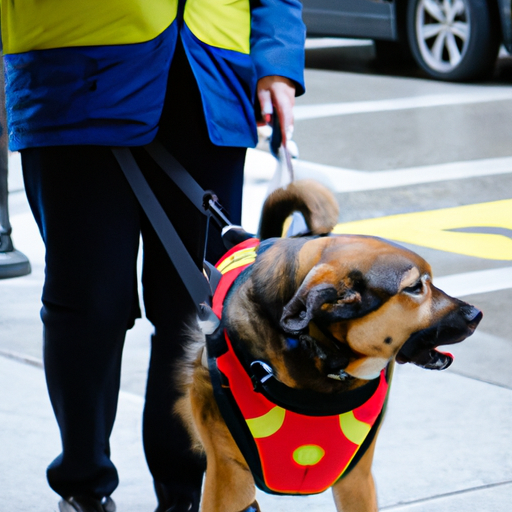Service dogs play an invaluable role in the lives of people who need them. They are not just pets; they are trained professionals who provide necessary services to individuals with disabilities, enabling them to live fuller, more independent lives. For caregivers, understanding the roles and duties of service dogs can help you better support those under your care.
H2: The Role of Service Dogs
Service dogs undergo rigorous training to perform specific tasks that mitigate their handler’s disability. This can range from guiding individuals who are blind or visually impaired, to alerting individuals who are deaf or hard of hearing to important sounds.
Here are some tasks service dogs can perform:
- Guiding the blind: These dogs help navigate their handlers around obstacles.
- Alerting the deaf: They’ll alert their handlers to sounds like doorbells or smoke alarms.
- Assisting mobility: They can pull wheelchairs, open doors, or retrieve items.
- Medical alert: They can alert handlers to impending seizures or sugar imbalances.
H2: The Different Types of Service Dogs
Various types of service dogs are trained to cater to different disabilities. Here are the most common types:
| Type of Service Dog | Duties |
|---|---|
| Guide Dogs | Assist visually impaired people |
| Hearing Dogs | Alert people with hearing loss to sounds |
| Mobility Assistance Dogs | Help with physical tasks |
| Medical Alert Dogs | Detect changes in health conditions |
H2: The Training of Service Dogs
Service dogs undergo intensive training before they are ready to assist their handlers. This process can take up to two years and includes:
- Basic obedience training: This involves commands like sit, stay, and come.
- Public access training: Ensuring the dog behaves appropriately in public spaces.
- Task-specific training: Teaching the dog the skills needed to assist their handler.
H2: The Legal Rights of Service Dogs
Under the Americans with Disabilities Act (ADA), service dogs have the right to accompany their handlers anywhere the general public is allowed. This includes restaurants, grocery stores, and other public places. However, they must be under control and not disrupt the normal functioning of these places.
H2: The Responsibilities of Handlers
As a handler, it is your responsibility to ensure your service dog is well cared for and able to perform its duties. This includes:
- Keeping your dog healthy and active.
- Ensuring your dog is well-groomed and clean.
- Regularly practicing and reinforcing training commands.
FAQs
Q1: What breeds are commonly used as service dogs?
A: Breeds often used include Labrador Retrievers, Golden Retrievers, and German Shepherds.
Q2: Can any dog become a service dog?
A: While many dogs can be trained, they must be able to perform tasks directly related to the handler’s disability.
Q3: Do service dogs ever get time to relax and just be dogs?
A: Yes, service dogs have downtime where they can relax and play, like any other dog.
Q4: How can I get a service dog?
A: There are many organizations that train and provide service dogs. It’s important to find one that suits your specific needs.
Q5: Can service dogs go on flights?
A: Yes, under the Air Carrier Access Act, service dogs are usually allowed to accompany their handlers in the cabin of an aircraft.
Understanding the role and rights of service dogs can lead to a better quality of life for those who need them. As a caregiver, you are instrumental in facilitating this understanding.



